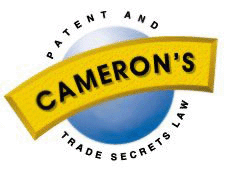
Teledyne Industries, Inc. et al v.
Lido Industrial Products Ltd.
citation(s): (1979) 45 C.P.R. (2d) 18 (F.C.T.D. per Addy, J.)
 |
Teledyne Industries, Inc. et al v.
|
copyright 1997 Donald M. Cameron, Aird & Berlis
"Although success on the market place is not by any means conclusive proof of inventive ingenuity, as that success may be attained notwithstanding a complete lack of inventive ingenuity regarding the product and may be due entirely to marketing ingenuity and effective sales promotion. However, commercial success can be good evidence of the inventive ingenuity involved in the creation of a device as well as of its practical utility: it may indicate a real need on the part of the public which had not been satisfied previously. There is no evidence of excessive advertising of either the plaintiffs' product or of Bowles Aqua Massage.
The comparison of their relative success on the market place is of some interest. The SM2 and SM3 were introduced to the American and Canadian markets sometime in September, 1973 and since then, on the North American market alone, the sales have exceeded 14,000,000 units. Bowles first began releasing advertising on their Aqua Massage some time previous to the yearly houseware show in Chicago in July, 1972. Some sales were effected in 1973 and 1974 and, subsequently, a concentrated sales push took place in 1975 and 1976. Yet, at the present time, the shower head is not being sold at all by the retail trade: it is being produced only for distribution to the premium trade. The evidence seems to indicate that altogether only a few thousand shower heads have been sold since they were first put on the market.
The defendant, before agreeing to purchase the shower heads in Hong Kong, was informed and was fully convinced that the plaintiff's device was doing extremely well on the market-place. This was, to a large extent, the very reason why he decided to import this particular type of shower head."
At p. 46:
"It was argued that with respect to the requirements of s-s. 36(1), including the duty to disclose the best mode, the material date is not the priority date accorded by s-s. 29(l) but is the date of the filing of the Canadian application and that if in the interval a better mode has been devised or has come to the applicant's knowledge the duty of the applicant under s-s. 36(l) is to disclose it. I do not think, however, that this view can prevail in the face of the express language of s-s. 29(l) which states that:
29(l) ... an application ... filed in Canada... has the same force and effect as the same application would have if filed in Canada on the date on which the application for patent for the same invention was filed in such other country...
This appears to me to mean that the application filed in Canada is to have the same effect as it would have if it had been filed in Canada on the earlier date and I do not see how full effect can be given to the application in accordance with the statutory wording if what is to be required is that more be disclosed in the application than would have been in it had it in fact been filed on the earlier date. In my opinion, therefore, the material date as of which the facts must be considered in the present instance is September 4, 1973. It is not February 27, 1974. Nor is it August 30, 1973, when the United States petition was signed."
Return to:
Cameron's IT Law: Home Page; Index
Cameron's Canadian Patent & Trade Secrets Law: Home Page; Index